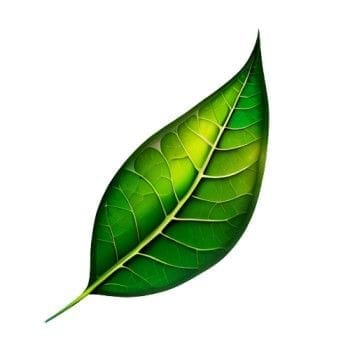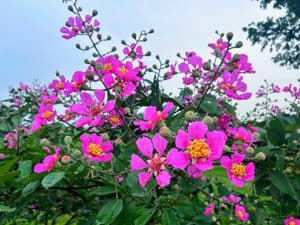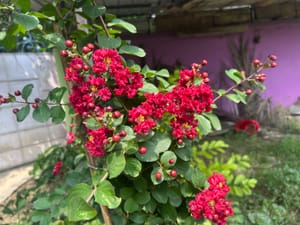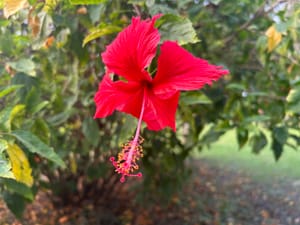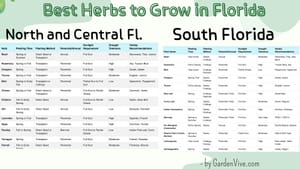
In this article, I am going to guide you on the cultivation of Papaya in the state of Florida. So if you are from Florida and want to grow Papaya in your garden then you can follow through this article.
Throughout my several years of experience, I have understood that Florida is the perfect region for growing Papaya. I have been growing Papaya for more than 15 years. Now I will also help you on how you can cultivate and care for Papaya plants to give you good results and plenty of fruits.
If you want a planting calendar for Florida, then you can check out these:
South Florida Planting Calendar (For South Florida planting guide)
Let's have a look at the basic information table of the Papaya Plant
| Category | Details |
|---|---|
| Botanical Name | Carica papaya L. |
| Common Names | Known as Papaya and Pawpaw in both English and Spanish, referred to as Malakor, Loko, Ma Kuai Thet in Thai, and Du Du in Vietnamese. |
| Plant Family | Caricaceae |
| Geographical Roots | Central America is recognized as the birthplace and primary region of diversification. |
| Plant Relatives | Includes the Mountain Papaya (also known as Chamburo, scientific name Vasconcellea pubescens) and Babaco (Vasconella x heilbornii). |
| Global Spread | Cultivated in tropical and subtropical areas worldwide and in temperate regions under protected cultivation. |
| Historical Journey | Initially introduced to the Caribbean and Southeast Asia, it later spread to India, Oceania, and Africa. |
I have three papaya plants at the moment of writing this article and those are of three different species. In a hybrid plant, you will get a lot more papaya fruits but believe me, the taste will not be as good as natural ones when the fruits are ripened.
Florida is a perfect place to grow papaya due to its warm humid (subtropical) climate. And you can easily grow it from seeds.
Invasive Assessment
Carica papaya's potential as an invasive species has not been fully evaluated by the UF/IFAS Assessment of Non-Native Plants in Florida's Natural Areas.
Description of the Papaya Plant
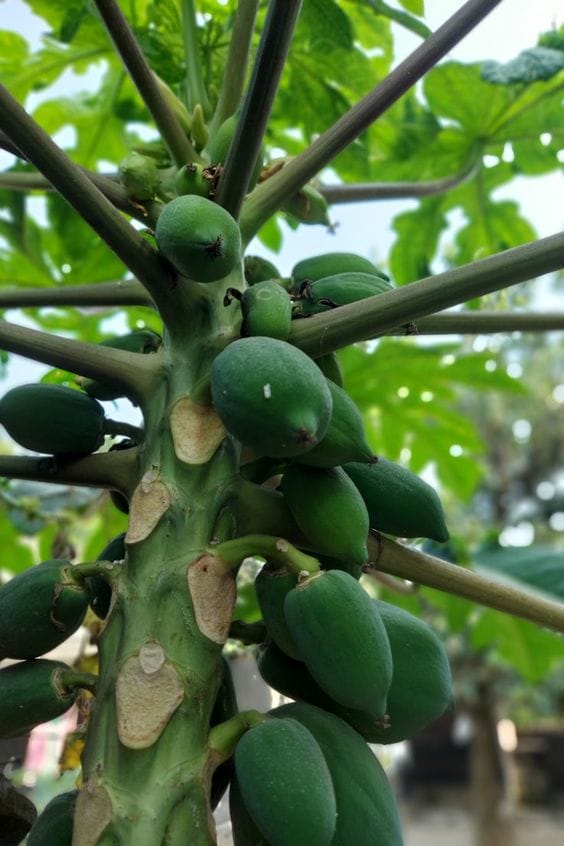
Before you go forward, learning something about this plant is good. Below are given some key points about this plant:
Plant Structure
A papaya plant can grow up to 33 feet (10 m) in height. It is typically short-lived but can survive up to 15 to 20 years. It starts with a single trunk and can develop secondary shoots over time. The plant lacks secondary growth (wood).
leaves
Papaya leaves are large and divided like fingers on a hand. Each one lives for about 6 to 8 months. In warm weather, the plant grows a new leaf every week. But in cooler weather, leaf growth slows down or stops.
Flower Types
Papaya plants are categorized into three types: male, female, and hermaphroditic (bisexual). Fruit production mainly occurs in female and bisexual plants.
Male flowers are small, tubular, and yellow, organized in cymes on long peduncles. Female flowers are larger, yellow to whitish, with a prominent ovary, situated on reduced cymes along the trunk. Bisexual plants bear perfect flowers on reduced cymes along the trunk.
Fruit Characteristics
The papaya fruit is a berry with a thin skin and thick flesh, containing numerous small seeds. Fruit shapes vary from round to pear-shaped, measuring 2 1/3 inch to 18 inches (7–35 cm) in length, and weighing ½ to 22 lbs (0.250–10 kg).
Pollination
Papaya can self-pollinate (in bisexual plants) or be cross-pollinated by insects and wind, with pollinators including honey bees, wasps, and butterflies.
Varieties
Numerous varieties exist, with 'Red Lady', 'Maradol', 'Tainung No. 1', and Solo-types being prominent in the U.S. Seed availability in small quantities is limited for urban gardeners.
Climate Factors
Papaya growth and yield are negatively impacted by various climatic conditions such as cool or cold temperatures, drought, strong winds, or shade. Optimal growth occurs in warm to hot temperatures (70°F–90°F; 21–32°C), with root growth being most efficient when soil temperatures are above 60°F (15.5°C). Papayas are sensitive to freezing temperatures, suffering damage or death below 31°F (-0.6°C). High temperatures above 90°F (32°C) may lead to flower drop, and temperatures below 59°F (15°C) can inhibit flowering or cause misshapen fruit. Regular rainfall is essential for optimal plant growth and fruit production. Adverse weather conditions can significantly reduce plant growth and fruit yield.
Papayas are vulnerable to wind damage, particularly in continuously windy areas. Plants bearing a large amount of developing fruit are especially prone to toppling in high winds, so planting in wind-protected areas is advisable.
Cultivation Process
Now let's learn about the cultivation process of the Papaya plant.
Propagation Methods
Papaya is primarily propagated through seeds, with tissue culture and rooted cuttings being less common methods. The plant's sex is genetically determined.
For seed propagation, extract seeds from ripe fruit, remove the sarcotesta (a sac inhibiting germination), rinse thoroughly, dry, and store in a refrigerator. When planting, use 2 to 3 plants per site to ensure fruit production, as seeds may yield female, bisexual, or male plants. Plant 2 to 4 seeds in a 1-gallon container with sterile media, water thoroughly, and place in a warm, sunny spot. After germination, maintain the most vigorous seedling and fertilize every 10 to 14 days. Once seedlings reach 6 to 12 inches tall, transplant them to a sunny location.
Production and Yield
Well-maintained papaya plants may start flowering 4 months after planting, with fruits developing 7 to 11 months later. Yield can vary based on climate, weather conditions, and plant care, with averages ranging from 60 to 80 lbs per tree annually.
Spacing and Pruning
Be careful about planting papaya trees in full sun. It is necessary for good growth of this plant. Also, keep spacing of 7 to 10 ft apart from other structures. Pruning is generally unnecessary as the main growing point is at the top. However, if side shoots develop, select 1 or 2 vigorous ones for growth and remove the rest. Staking these shoots can help support the weight of the fruit and protect against wind damage. Regularly removing dead leaves can reduce fruit scarring and decrease disease and insect issues.
Soil Requirements
Papayas thrive in a variety of well-drained soils, including sands, loams, and rocky soils with a pH range of 4.5 to 8.0.
Planting Guidelines
When planting, choose a healthy nursery tree, avoid root-bound plants, and inspect for pests and diseases. Plant in full sun, avoiding areas prone to flooding. For sandy soils, dig a large hole to facilitate root expansion, backfill, and water immediately. In rockland soil, break up the rock to create a suitable hole. In areas prone to flooding, consider planting on a raised mound.
Care and Maintenance
Regular fertilization and irrigation can help you in healthy papaya growth and fruit production. Use a complete fertilizer with nitrogen, phosphate, potash, and magnesium, increasing the amount as trees grow. Well, in many cases home attached Papaya can give you good results without using any fertilizer. But if you are serious about this or you want to grow Papaya for commercial purposes, then you should use the fertilizers I have mentioned.
You also have to adjust watering based on soil type and weather conditions, ensuring adequate moisture without overwatering.
Pest and Disease Management
Common pests include the papaya fruit fly, papaya webworm, papaya whitefly, and two-spotted mite. Control measures include physical removal, water hosing, and using appropriate pest control products. Papaya plants are also susceptible to various diseases like papaya ringspot virus, anthracnose, powdery mildew, phytophthora blight, and corynespora leaf spot. Contact local agricultural extensions for current control recommendations.
Lawn Care and Papaya Trees
Protect papaya trees from lawn care equipment by maintaining a grass-free zone around the trunk. Avoid heavy fertilization and overwatering near papaya trees to prevent adverse effects on fruiting and fruit quality.
Harvest, Ripening, and Storage
Harvest papaya when it starts showing yellow to orange color on the peel. Ripe fruits can be stored in the refrigerator for 4 to 7 days.
Uses and Nutritional Value
Papayas are versatile in culinary uses, suitable for fresh consumption, in salads, drinks, and desserts, or used as a vegetable when unripe. They are low in calories and rich in potassium and vitamin A, offering various health benefits.
That's all needed for cultivating Papaya professionally. I think I have covered all the necessary factors that are important for the good growth of the Papaya plant. Try it out by yourself and let me know in the comment section below.
